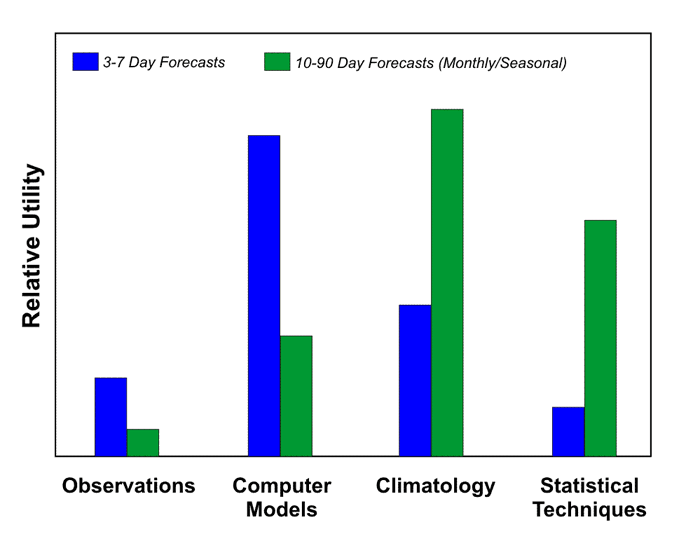Seasonal Outlooks: Much More than a Crystal Ball
Over the years, various individuals and businesses have claimed that they can make specific daily forecasts up to a year in advance. The truth is, as the science of meteorology stands in the early 21st century, forecasts of specific weather conditions beyond about 10 days in the future are no better than coin flips (or climatology) most of the time (sorry Old Farmer's Almanac). The official statement of the American Meteorological Society on the subject reads:
"Claims of skillful predictions of day-to-day weather changes beyond this limit [a week or two] have no scientific basis and are either misinformed or calculated misrepresentations of true capabilities."
The best that science can perform over time periods beyond a week or two is to identify (with varying degrees of certainty) some general patterns. For example, long-range forecasters can often determine whether temperature or precipitation will be above average, near average, or below average. This kind of rather general information won't help someone planning a wedding for a specific weekend next June, but there still is useful information in describing the general weather patterns in the months or seasons to come. And the skill in such monthly and seasonal forecasts has improved quite a bit in recent years.

For monthly or seasonal forecasts, current weather observations help very little; climatology becomes a much more important player. But if long-range outlooks were only a reflection of climatology, what good would they be? For monthly and seasonal outlooks, statistical techniques such as teleconnections are indispensable. The graph above reflects the relative utility of the four basic components of medium-range forecasting and monthly-to-seasonal outlooks. Notice that forecasters don't rely very much on observations in creating long-range outlooks (compared to medium-range forecasts). Meanwhile, the relative utility of climatology and statistical techniques increases dramatically in transitioning from medium-range to long-range forecasts.
That's not to say that personal insights and the experience of long-range forecasters is set on auto-pilot. Like short-range and medium-range forecasts, pattern recognition still plays an integral role in creating monthly and seasonal outlooks.